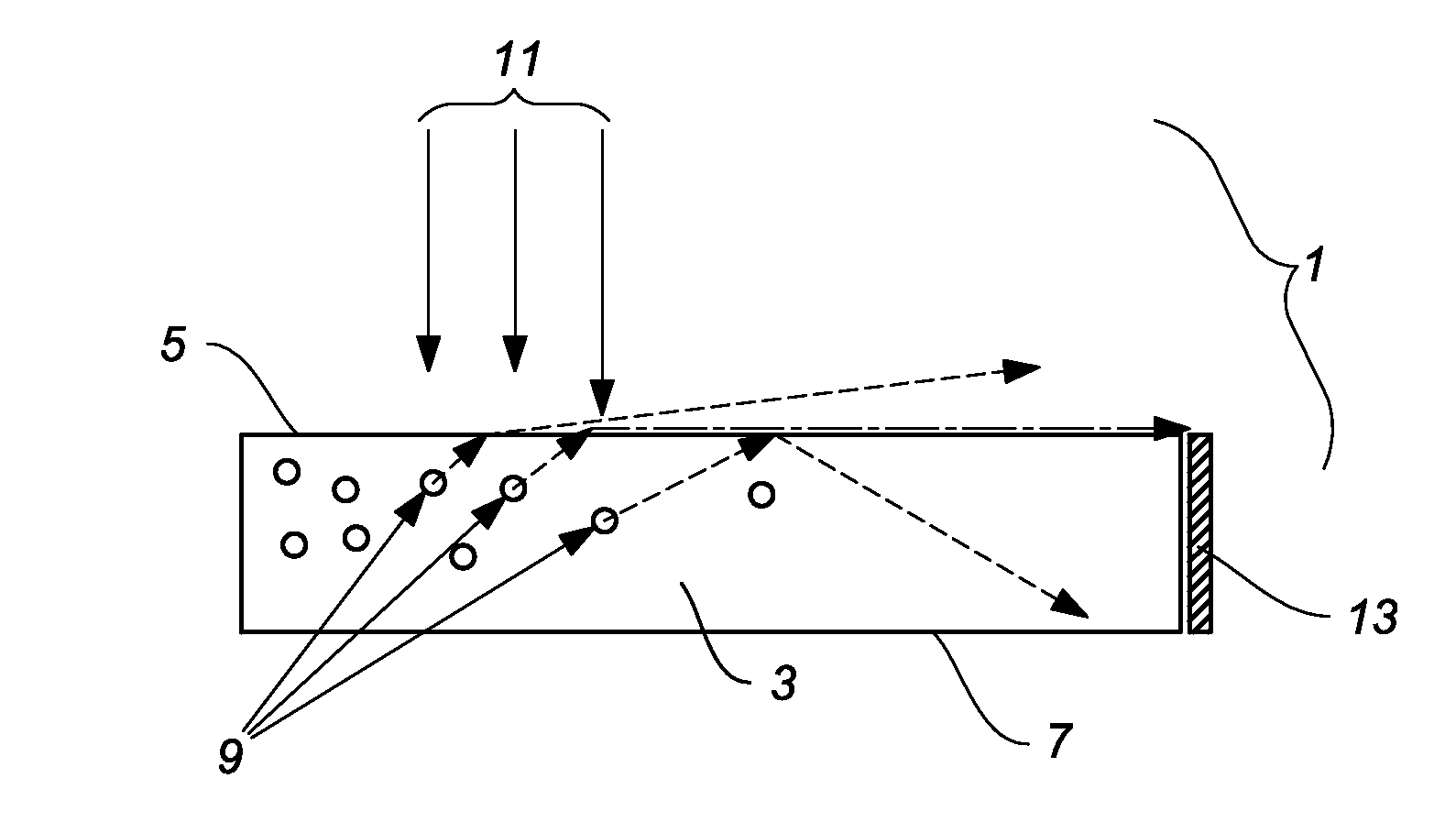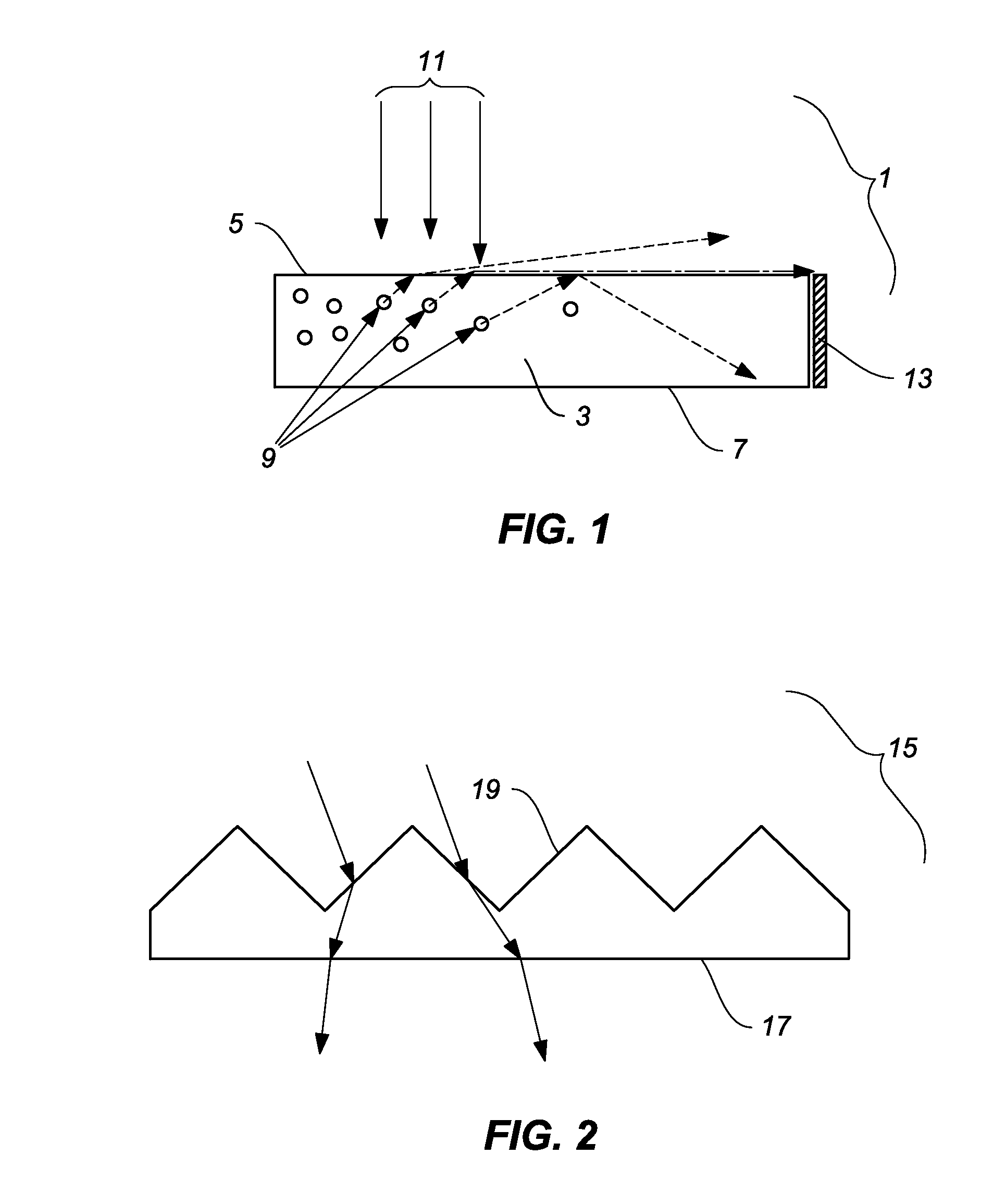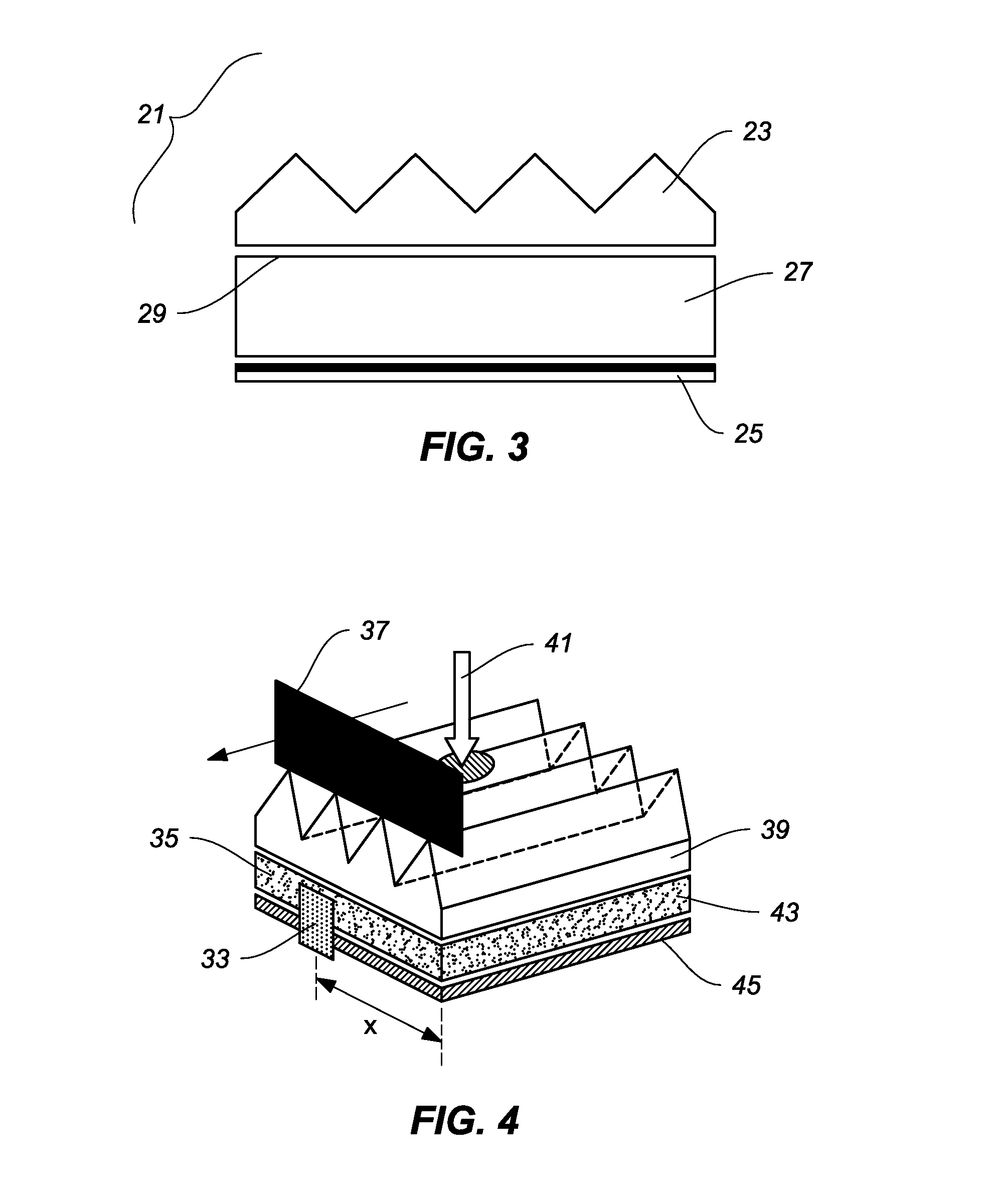Luminescent solar concentrator
a solar concentrator and solar energy technology, applied in the field of solar concentrators, can solve the problems of low light diffusion efficiency, poor light diffusion effect, and poor robustness of light concentrator optical elements, and achieve the effect of not being cheap, not very effective in diffuse light, and not being able to meet the requirements of light diffusion
- Summary
- Abstract
- Description
- Claims
- Application Information
AI Technical Summary
Benefits of technology
Problems solved by technology
Method used
Image
Examples
example 1
[0126]A 0.27 mm thick sheet of a flexible plastic doped with a luminescent Rhodamine dye was used as the luminescent concentrator sheet element. The sheet was approximately 20 cm square. A green LED with 250 mCd output and λmax of 563 nm was coupled to a microscope with objective diameter 5.24 mm to provide a collimated incident beam. The peak wavelength of the LED corresponded very closely to the spectral absorption peak of the luminescent dye used. The dye density was such that about one third of the incident green light was transmitted in the sheet on a single pass. A large area photodiode was baffled with black card to provide a square aperture 33 with 5 mm side and was brought close to the edge of the luminescent sheet to detect luminescent emission from its edge face 35 as shown in FIG. 4. A black card sheet 37 was used as a baffle to prevent stray light from entering the detector directly from the LED 31. The photocurrent was amplified and measured. The LED light source was p...
example 2
[0128]The thin plastic film doped with rhodamine dye was replaced by an A4 sized PMMA slab of thickness 3 mm doped with Lumogen™ F Red dye (BASF). Black adhesive tape was affixed to 3 side-faces of the sheet to stop edge reflections. It was noted that the use of the black tape reduced the signal at the maximum separation of LED and detector by about 10%. Again, as in Example 1, a mirror was placed below the luminescent sheet and a SOLF™ film was placed above. In this experiment, the green LED was moved and the detector held stationary to vary the distance D as shown in FIG. 5. A black baffle was placed between the LED and the detector to reduce stray light. The detector was a 100 mm2 photodiode supplied by Melles Griot which was itself unbaffled to receive light from both the luminescent sheet and from the “outer waveguide” comprising the mirror and the SOLF™ sheet.
[0129]FIG. 9 shows the results of this experiment where there is a clear benefit of using the prism sheet. The differen...
PUM
 Login to View More
Login to View More Abstract
Description
Claims
Application Information
 Login to View More
Login to View More - R&D
- Intellectual Property
- Life Sciences
- Materials
- Tech Scout
- Unparalleled Data Quality
- Higher Quality Content
- 60% Fewer Hallucinations
Browse by: Latest US Patents, China's latest patents, Technical Efficacy Thesaurus, Application Domain, Technology Topic, Popular Technical Reports.
© 2025 PatSnap. All rights reserved.Legal|Privacy policy|Modern Slavery Act Transparency Statement|Sitemap|About US| Contact US: help@patsnap.com



